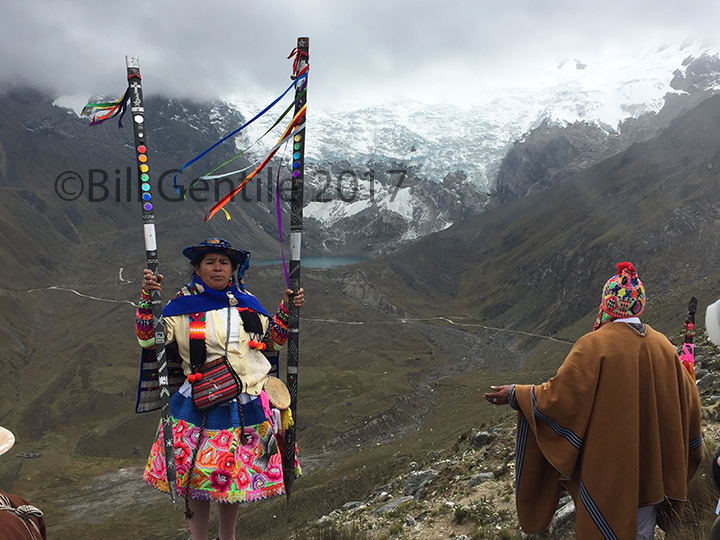HUAYTAPALLANA, Peru, 21 June 2017 – Peruvians gather on a ridge overlooking the glacier and lake below to celebrate the Andean New Year. In recent years the glacier has lost much of its mass, which scientists believe is the result of global climate change. The depletion of the ice means the depletion of an important source of water for the communities located below this peak, while stands at 14,000 feet above sea level.
I’m on assignment for American University’s (AU) Center for Latin American and Latino Studies (CLALS), producing a short film about religion and climate change in this South American country. Citizens of this region maintain a deep spiritual relationship with the mountain and its glacier, which are the providers of life-sustaining water.
About 71 percent of the world’s tropical glaciers are located in Peru.
As usual when I take on these assignments, I’m employing the “Backpack Journalism” model that I introduced to AU’s School of Communication (SOC) shortly after my arrival there and launched the Backpack Journalism Project. The methodology boils down to one story, one camera and one properly trained visual journalist using equipment that he/she can stuff into one backpack.
At 14,000 feet above sea level, it’s a challenge muscling around any gear at all, even the new, relatively light Sony PXW-Z150 cameras recently acquired by the SOC.
(Photo by Bill Gentile.)

